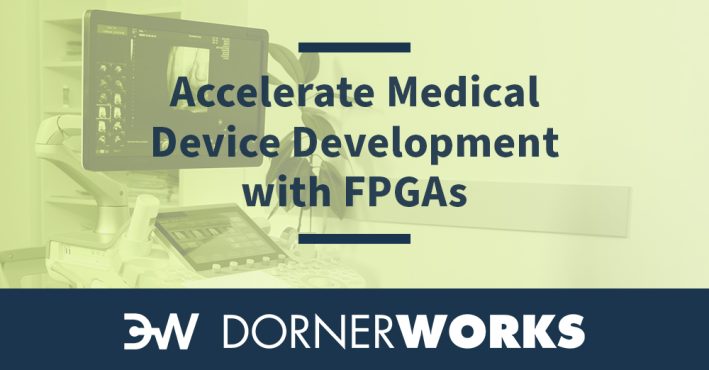
Using Field Programmable Gate Arrays (FPGAs) on development boards in the early iteration and research and development stages of building a medical device can provide numerous advantages. FPGAs are integrated circuits that can be reprogrammed to perform a wide range of functions, making them highly flexible and adaptable. They are also capable of parallel processing, which can greatly speed up complex computations and simulations.
One of the key advantages of using FPGA-enabled development boards in the early stages of medical device development is their ability to model end product functionality before the target platform hardware is available. This can be especially useful for medical devices that require highly specialized or custom hardware, as it allows developers to test and refine the device’s functionality before committing to a specific hardware platform.
For example, let’s say that you are developing a medical device that requires high-speed data processing and analysis. By modeling the device’s functionality on an FPGA, you can test different algorithms and configurations to determine the optimal approach for achieving the desired performance. This can save a significant amount of time and resources that would otherwise be spent on prototyping and testing on actual hardware.
Another advantage of using FPGAs in the early stages of medical device development is their programmability. Because FPGAs can be reprogrammed, they can be easily modified and updated as the design of the device evolves. This can be especially useful in the research and development phase when the requirements and specifications of the device are likely to change frequently.
While using FPGA-based development boards can provide many benefits in the early stages of medical device development, it is important to note that working with these devices can be a complex undertaking. It requires a deep understanding of FPGA design and programming, as well as experience with medical device development.
This is where a trusted development partner like DornerWorks can be extremely valuable. As an AMD Premier Partner, DornerWorks has the specialized FPGA expertise to guide you through the process of designing and developing products using high-performance FPGAs.
For an endoscope type camera and display, a major medical company wanted to use the NVIDIA Jetson platform to enable AI image processing to highlight features, with an FPGA to layer those highlights onto the low latency video.
“The benefit of the FPGA for the video pipeline is the low latency,” says DornerWorks FPGA engineer Scott Gauche. “We can bring in HDMI 4k video, split it off, and transfer it to a PCIe path for overlay information. The FPGA brings that low latency to the camera system.
“If you’re working on a patient, if there is delay in the video that prevents you from seeing what your hands are doing, that can be a significant risk,” he adds.
DornerWorks engineers developed the base prototype for the platform to determine the feasibility of controlling the video pipeline from another AMD Zynq UltraScale+ MPSoC using PCIe. They also evaluated the feasibility of a new IP solution from Xilinx.
The prototype platform uses existing development kits for the NVIDIA Jetson device and the AMD MPSoC device and an existing DornerWorks video prototype design to provide the video input and output stages.
The completed prototype demonstrates the full video frame transfers from the AMD MPSoC device to the Nvidia Jetson over PCIe.
Over follow-on engagements, DornerWorks FPGA engineers guided the customer through PCIe performance optimizations and the addition of user configurable video processing hardware accelerated functions implemented in the AMD MPSoC programmable logic.
DornerWorks medical device engineers further helped the customer navigate the standards requirements landscape once the system moved into production.
FPGAs have been associated with long development cycles and costly components.
The truth is, an FPGA can help accelerate development of nextgen products that rely on high-speed streaming data for many different applications.
By using FPGAs in the early stages of medical device development, you can take advantage of their parallel processing power and programmability to quickly and efficiently model and test the functionality of your device. And with the help of a trusted development partner like DornerWorks, you can navigate the complexities of FPGA design and development and bring your medical device to market successfully.
Schedule a meeting with our team today and turn your product ideas into reality.